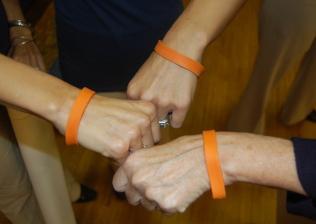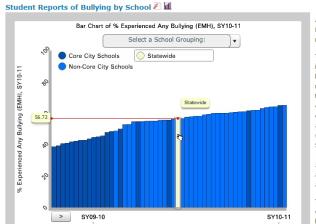Bullying & School Violence
Bullying and school violence undermine the safe learning environment that students need to achieve their full potential.

The RI Statewide Bullying Policy, known as the Safe School Act, recognizes that the bullying of a student creates a climate of fear and disrespect that can seriously impair the student's health and negatively affect learning. The purpose of the Policy is to ensure a consistent and unified statewide approach to prohibiting bullyiing at school.
According to the Centers for Disease Control and Prevention (CDC), "school violence is youth violence that occurs on school property, on the way to or from school or school-sponsored events, or during a school-sponsored event". Examples of violent behavior include bullying, fighting, robbery, vandalism, electronic aggression, weapon use, and gang violence.
Data about Bullying in Schools

SurveyWorks! is a survey conducted in every year in all Rhode Island schools. Students are asked about:
- The types of bullying they are experiencing
- The reasons they are being bullied
- If they report the bullying
- If they feel safe at school
Download copies of school SurveyWorks!
Data about Violence in Schools
The CDC Youth Risk Behavior Surveillance System (YRBSS) monitors six categories of priority health-risk behaviors among youth and young adults including behaviors that contribute to unintentional injuries and violence.
